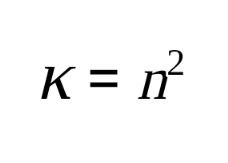A formal education tells us what is profitable. It does not teach us what is possible!
We need to modify our conceptualization of an LRC circuit if we wish to transcend the limitations of conventional wisdom and experience the unbounded potential that is awaiting us.
There is a secret that I may not have emphasized adequately, or I may even have left out of some prior posts, on the topic of the relationship between the refractive index of prisms and the dielectric constant of capacitors and how they can cross each other's boundary into the other's realm, because they are mathematically related to each other.
This secret of making a capacitor into a prism, by reducing its capacitance to a low enough value, only works if you have this situation in two or more capacitors with an inductance, nearby. It does not work if you only do it to one capacitor. This is probably why nobody ever thinks of doing this, because they're programmed to think only in terms of a single capacitance and a single resistance and a single inductance when considering the theoretical foundation of an LRC concept.
But this is only good in teaching the theory of an LRC relationship. It is not practical, nor does it demonstrate, the principle of converting a capacitor into a prism in order to convert a circuit into a generator of power so as not to be caught up (strictly) within the realm of the consumption of power. Because, once we add a coil to a pair of low-level capacitors, now we don't have consumption anymore. Instead, we have the generation of power.
We have accomplished this generation of power within the circuit, not by creating energy, but by utilizing the energy that we get from our environment, which is at a very low level – just like the low level of capacitance of our pair of capacitors, and converting that consumption of power from our environment (at environmental levels of input) into the generation of power which now becomes a whole different ball game. Because the consumption of power uses up the power. This is according to entropy. The power diminishes when we consume it.
But what happens when we generate power – using the methods described above in overly simplistic terms – is that the power that we generate by these methods does not diminish, because we are not consuming it. Instead, it accumulates and it accumulates at a fantastic rate of exponential growth because of the bi-directional relationship between resistance creating an increase of voltage and an increase of voltage increasing resistance repeating itself in an ever-escalating cycle.
This is what people say when they want to say: “a perpetual motion machine is a situation in which you have to be able to take some of the output and feed it back into the input so that the machine can go on running, perpetually.”
But voltage is a potential. It is not a movement, nor does it involve change. And this is the only thing we can feed back into our circuit from the output is more voltage. But with that, we are also feeding back into the input an alteration of how the circuit perceives its various resistances and impedances by making their practical outcome greater than they were before because the voltage is greater than before.
This is because the circuit perceives its various impedances and resistances in a whole new light – based on this increased voltage left over from the previous cycle of oscillation that is greater now than it was before – causing the various impedances and resistances of the circuit to respond with an even greater consequential rise of voltage.
And this increase of voltage is not an incremental amount the same as within the prior cycle of oscillation, but is a proportional amount making it incrementally greater than the increase of the prior cycle. This is what makes the growth of voltage exponential. Any growth of current is a minor side effect and can almost be assumed to be a leakage of current rather than any kind of concerted effort to increase the current.
But this minor increase of leakage current, trailing behind the gargantuan increase of voltage, is not a problem – because we can adjust it by bringing down the voltage and raising up the current (in another subsection of the circuit) so that now we have a practical balance between the two.
I'm just giving you the overview without giving you any technical details so that you can appreciate where my experience has left me in a unique outlook in as much as I can analyze my successes instead of merely claiming that they happened.
We need to do this to improve our theory. Because if we don't improve our theory, we will not improve our awareness – as consumers – to expect a better life within this area.
We don't have to become electrical engineers to want more satisfaction. But we have to appreciate what electrical engineers are not taught. Because they are merely taught how to stabilize society. They are not taught how to progress it. Because most profits are made out of a stable society which doesn't change a whole lot – at least not in a fundamental sense. This is the travesty of commerce that it gives us wealth and comfort and ease but it also stands in the way of progress. This turns me into an outlaw, an usurper, a rebel rouser – not someone of reputable standards whom anyone else would want to associate with.
But how else are we to make any progress!?





